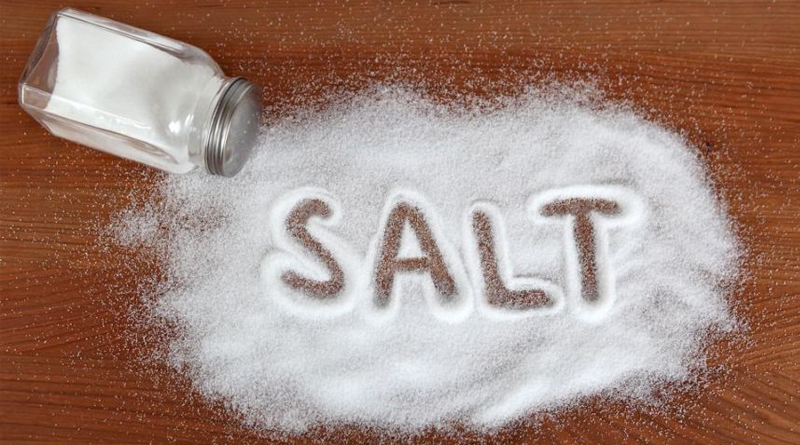The US National Academies of Sciences, Engineering and Medicine have released a new report which after reviewing the latest evidence, updates sodium and potassium Dietary Reference Intakes (DRIs) and revises Adequate Intakes (AIs), meaning the optimal intake levels for healthy individuals, for sodium and potassium. The DRIs were last updated in 2005. Additionally, the report introduces the first DRIs specific to chronic disease risk reduction, coined Chronic Disease Risk Reduction Intake (CDRR).
Potassium and sodium are both essential nutrients that play vital functional roles in the body. They are important for nerve signal transmission, muscle contraction and fluid balance. However, diets high in sodium and potassium have been linked to an increased risk of developing cardiovascular disease and other adverse health effects, the report notes. With this in mind, the review set new AIs that may promote health.
Updates on sodium
The report noted that sodium AIs for infants from 0 to 6 months are 110mg per day and infants from 7-12 months should consume at 370mg per day. For children, the daily recommended AIs are 800g for ages 1-3, 1000mg for ages 4-8 and 1200mg for ages 9-13. Due to insufficient data on sodium intakes for adults below 1500mg per day, the committee refrained from considering further reductions in the sodium AI for adults.
There is sufficient evidence to characterize the relationship between sodium intake and risk of chronic disease, so the report established a CDRR for sodium using scientific evidence of the beneficial effect of reducing sodium intake on cardiovascular disease risk, hypertension risk, systolic blood pressure and diastolic blood pressure. Through this move, the committee seeks to reduce the risk of chronic disease within the apparently healthy population.
The CDRR recommendation suggests that individuals aged 14 and over should reduce sodium intake if that exceeds 2,300mg per day. The committee also established a sodium CDRR for children ages 1-13. The effect of sodium intake on blood pressure that was used to inform the sodium tolerable upper intake level (UL) established in the 2005 DRI report is part of the evidence base that informed the CDRR.
The researchers say that North Americans consume sodium above the AI and CDRR recommendations.
Potassium recommendations
For potassium, the recommended values of daily consumption are 400mg for infants from 0-6 months, 860mg for infants 7-12 months, 2000mg for children aged 1-3 and 2,300 for ages 4-8. For all other age groups, the recommended levels range from 2,300 to 3,400 depending on gender and age. The recommendations for potassium are lower in this report, compared to the 2005 one. This difference is mostly based on the expansion of the DRI model, which now considers chronic disease risk reduction to be separate from consideration of adequacy.
Moreover, the report confirms that there is insufficient evidence to establish a potassium intake threshold for healthy people. This does not mean that high potassium consumption holds no risks, however. Caution against high intake through supplemental potassium is warranted for certain population groups, particularly those with or at high risk for compromised kidney function, the report says.
Several studies have proved that potassium supplementation reduces blood pressure among people with hypertension, yet the report notes that a CDRR can’t be established due to several reasons. These include unexplained inconsistencies in the body of evidence, little evidence for relationships between potassium intake and chronic disease risk and a lack of intake-response relationship. The lack of a potassium CDRR does not necessarily mean a lack of an effect of potassium intake on chronic disease risk, the report says, but rather a lack of evidence to characterize the effect.
According to the reviewing committee, further research is necessary to establish future thresholds for daily intake of potassium and sodium. Fueled by the increased consumption of sodium and potassium across North America, research on the matter is bound to continue, the report says.
The National Academies are private, nonprofit institutions that provide independent, objective analysis and advice to solve complex problems and inform public policy decisions related to science, technology, and medicine.
Limiting sodium consumption may be the solution to decreasing the risk for chronic diseases. According to a study published in the journal Hypertension which analyzed the diets of over 4,000 people, a healthy diet may not offset the negative impacts of high salt intake on blood pressure. The results showed that people eating higher amounts of salt had higher blood pressure – no matter how healthy the person’s overall diet was.
The worrying effects of high sodium intake have been noted around the world, with most recently, a UK lobby group highlighting the “astonishingly high” amounts of salt in children’s meals in several popular UK restaurant chains. According to a nationwide product survey endorsed by lobby group Action on Salt, some dishes had almost as much salt as an adult’s entire daily recommended limit and that 41 percent of dishes contained more salt than the Public Health England (PHE) 2017 target.
Source: Nutrition Insight










